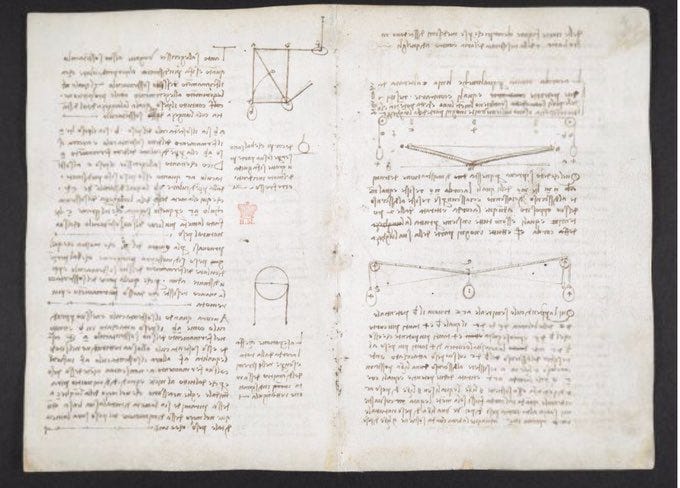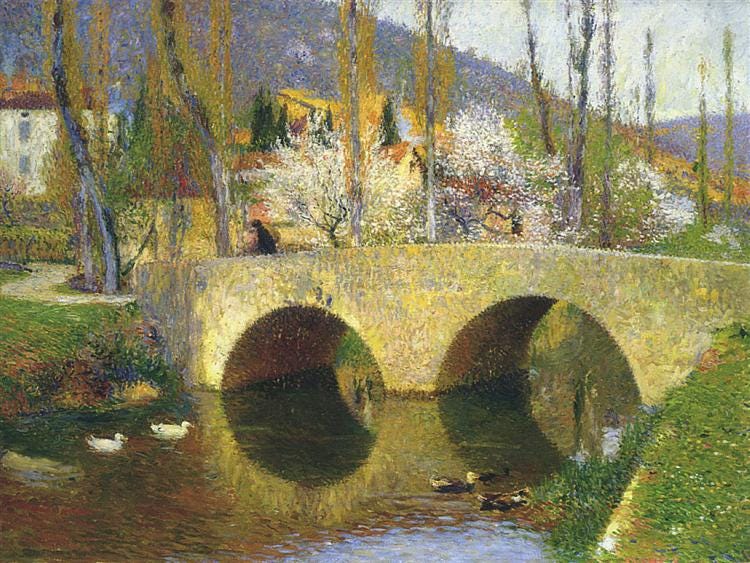- Axial
- Posts
- The Notebook of Leonardo da Vinci, The Codex Arundel
The Notebook of Leonardo da Vinci, The Codex Arundel
Strategy
Axial: https://linktr.ee/axialxyz
Axial partners with great founders and inventors. We invest in early-stage life sciences companies such as Appia Bio, Seranova Bio, Delix Therapeutics, Simcha Therapeutics, among others often when they are no more than an idea. We are fanatical about helping the rare inventor who is compelled to build their own enduring business. If you or someone you know has a great idea or company in life sciences, Axial would be excited to get to know you and possibly invest in your vision and company. We are excited to be in business with you — email us at [email protected]

The Codex Arundel, housed in the British Library, represents one of the most significant collections of Leonardo da Vinci's manuscripts. In his characteristic left-handed mirror-writing (reading from right to left), this remarkable compilation of papers, written between 1478 and 1518, offers an unprecedented glimpse into the polymath's intellectual processes, scientific inquiries, and technological innovations. This analysis explores the contents, significance, and historical context of this invaluable document.
The Codex Arundel consists of 283 paper folios of various sizes, bound together after Leonardo's death. Unlike a traditional book written in sequential order, the codex is a collection of Leonardo's loose papers, featuring notes and drawings written in his characteristic mirror script. The papers were likely gathered and bound in the current format during the late 16th century, after passing through several hands following Leonardo's death in 1519. The manuscript derives its name from Thomas Howard, 14th Earl of Arundel, who acquired it in the early 17th century. The collection eventually made its way to the British Museum in 1831 as part of the Arundel Library, before being transferred to the British Library, where it remains today.
The Codex Arundel is remarkable for its diverse range of subjects, reflecting Leonardo's wide-ranging intellectual interests. The manuscript contains writings and drawings on numerous topics, including:
Leonardo's mathematical investigations form a significant portion of the codex. His geometric studies demonstrate a practical approach to mathematics, often tied to specific engineering or artistic problems. The manuscripts show his work on proportions, areas, and volumes, including innovative methods for calculating the areas of irregular shapes. His mathematical notes reveal an empirical mindset, preferring practical demonstration over purely theoretical approaches.
The codex contains numerous studies of mechanical devices and engineering principles. Leonardo's detailed drawings and notes cover various mechanisms, including water-lifting devices, military machines, and flying apparatus. His studies of friction, motion, and force demonstrate an advanced understanding of mechanical principles that was far ahead of his time. Particularly noteworthy are his investigations into the concept of perpetual motion, which, while ultimately impossible, led to important insights into mechanical efficiency and energy transfer.
Water fascinated Leonardo, and the Codex Arundel contains extensive studies of water flow, wave patterns, and hydraulic systems. His observations of water movement demonstrate remarkable accuracy, and his drawings capture the complex patterns of turbulence and flow with artistic precision. These studies were not merely theoretical; they had practical applications in his designs for canal systems, water mills, and irrigation projects.
The architectural drawings in the codex reveal Leonardo's innovative approach to building design. His sketches include both practical architectural elements and more speculative designs. Of particular interest are his studies of church architecture and centrally planned buildings, which show his understanding of structural principles and his ability to integrate engineering solutions with aesthetic considerations.
The Codex Arundel provides valuable insights into Leonardo's scientific methodology. His approach was remarkably modern, combining careful observation with systematic experimentation and theoretical analysis. Throughout the manuscript, we see evidence of his empirical method:
1. Direct Observation: Leonardo consistently emphasizes the importance of firsthand observation. His detailed drawings and notes show a commitment to accurately recording natural phenomena.
2. Experimental Approach: Many pages contain descriptions of proposed experiments, demonstrating his understanding that theoretical principles needed to be tested through practical investigation.
3. Interdisciplinary Thinking: The codex reveals how Leonardo frequently drew connections between different fields of study, applying principles from one area to solve problems in another.
The Codex Arundel emerged during the height of the Italian Renaissance, a period of extraordinary intellectual and artistic achievement. Leonardo's work reflects the Renaissance ideal of the "Universal Man" (Uomo Universale), comfortable working across multiple disciplines. The manuscript demonstrates how Leonardo embodied this ideal, moving freely between art, science, engineering, and philosophy. The historical context is particularly important for understanding the innovative nature of Leonardo's work. Many of his investigations recorded in the Codex Arundel challenged the prevailing Aristotelian view of nature that dominated medieval thought. His empirical approach, focusing on observation and experiment rather than received wisdom, helped lay the groundwork for the scientific revolution that would follow in the next century.
The manuscript's format and writing style provide fascinating insights into Leonardo's thought processes. His famous mirror writing, reading from right to left, has been the subject of much speculation. While some suggest it was a method of keeping his work secret, it may simply have been a practical solution for a left-handed writer to avoid smudging ink. The pages of the codex show Leonardo's characteristic integration of text and image. Drawings are not mere illustrations but are integral to his thinking process. The relationship between word and image in the manuscript reveals how Leonardo used drawing as a tool for thought, working out problems visually as well as verbally.
The Codex Arundel's significance extends far beyond its historical value. It continues to influence modern understanding in several ways. Many of Leonardo's observations and theories recorded in the codex predate similar scientific discoveries by centuries. His studies of fluid dynamics, for instance, anticipate principles that would not be formally described until the development of modern physics. The engineering principles documented in the codex continue to inform modern mechanical design. Leonardo's emphasis on understanding natural principles as a basis for engineering solutions remains relevant today. The manuscript's integration of different fields of study provides a model for modern interdisciplinary research. Leonardo's ability to connect seemingly unrelated areas of knowledge demonstrates the value of broad-based thinking in problem-solving.
The preservation and digitization of the Codex Arundel represent significant achievements in manuscript conservation. The British Library's efforts to make the manuscript available online have democratized access to this important document, allowing scholars and interested readers worldwide to study Leonardo's work directly. The Codex Arundel remains relevant to modern readers and researchers for several reasons. First, it provides insights into the development of scientific thought and methodology. Second, Leonardo's integrated approach to problem-solving offers lessons for contemporary challenges that require interdisciplinary solutions. Finally, his detailed observations of natural phenomena continue to inspire scientific and engineering investigations.
The Codex Arundel stands as one of the most important documents in the history of science and technology. It provides unique insights into the mind of Leonardo da Vinci and the development of modern scientific thought. The manuscript's diverse content, innovative methodology, and integrated approach to knowledge continue to offer valuable lessons for contemporary scholars and practitioners. The codex demonstrates that Leonardo was not merely an artist who dabbled in science, but a systematic thinker who approached problems with remarkable rigor and creativity. His work, as preserved in the Codex Arundel, continues to bridge the perceived divide between art and science, showing how visual thinking and systematic analysis can work together in understanding the natural world.
As we continue to study and learn from the Codex Arundel, new insights emerge about both Leonardo's specific contributions and the broader process of scientific discovery. In an age of increasing specialization, the manuscript reminds us of the value of maintaining a broad, integrated perspective on knowledge and understanding. Its pages continue to inspire new generations of thinkers, inventors, and artists, demonstrating the enduring relevance of Leonardo's remarkable vision.
